Saturday, July 29
The weather was gray with low clouds when I woke up but I had a relatively short drive, Tok to Fairbanks is only 210 miles, so I took my time over breakfast hoping the sun might break through. The route was not designated as scenic but The Milepost guide indicated there were some good views near Tok which I will have to accept since I could not see them. The weather improved as I got closer to Fairbanks but the only feature of interest here was the Alaska Pipeline. There is a pipeline visitors turnout near Fairbanks where you can get close to it and see a few displays. As I left there and drove into Fairbanks the rain began to fall so I headed for my hotel.
The map and video of the drive is here.
Many of the rivers I crossed were all but dried up and, in this view of the Tanana River, you can see that the water level is low.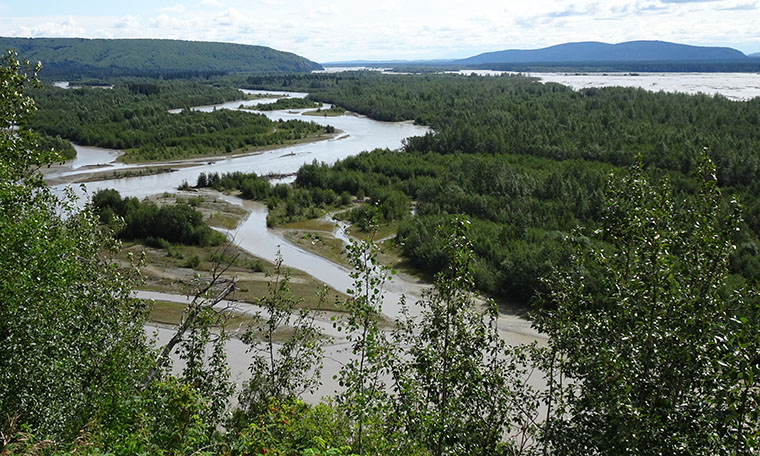
The Alaska Pipeline has its own suspension bridge across the Tanana river.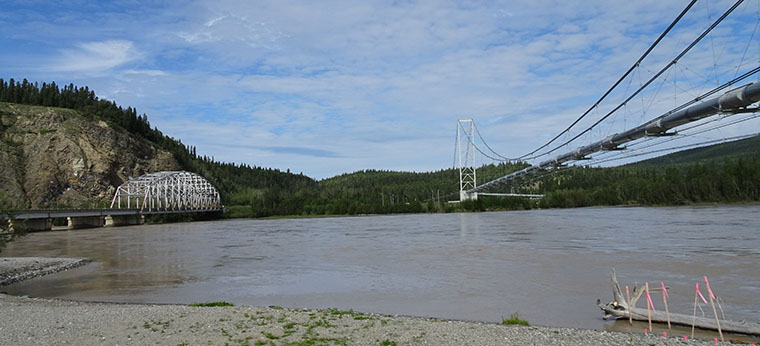
The pipeline is more complex than I imagined. I knew it zig-zagged along its route to allow for expansion but I did not know that the oil that passes through it is at 100 F. Special refrigerating insulators, using ammonia gas, are used to keep the supports cold so that the permafrost does not melt and undermine the structure.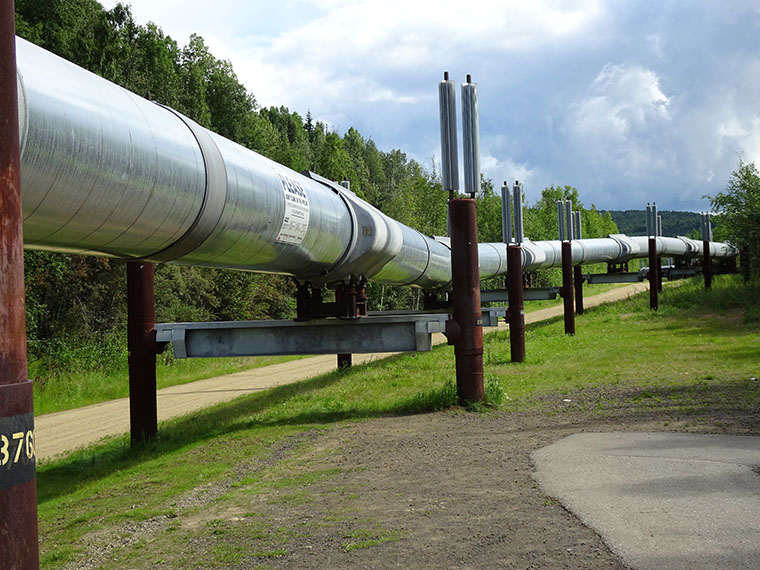
Sunday, July 30
Fairbanks is the furthest my car has traveled from home, 3250 miles as the crow flies, but 4,820 miles according to the car. However, there is surprisingly little that interested me here so this was mainly intended as a prep day for my remaining time in Alaska. Since I will be flying to Juneau in a couple of days I had to pull everything out of the car and re-arrange things for travel without a vehicle in unpredictable, but likely cool and wet, weather. I had looked for an interesting walk in town but was not wowed by any ideas I saw so I slept in, had a leisurely breakfast, did laundry, repacked, and some shopping before visiting the Large Animal Research Station at the University of Alaska.
The research here investigates methods to sustainably raise and farm large Alaskan animals and reduce the price of their products. They focus on two species, musk oxen and reindeer. Musk ox hair produces the warmest, softest fiber for making things like scarves but, to do it sustainably, is currently very costly. There is a guided walking tour of the facility and this gave me an opportunity to see and learn about something a little different and take my walk.
The musk ox is used to temperatures as low as -40 F and today’s 75 F meant that only one moved from its shady location to get food.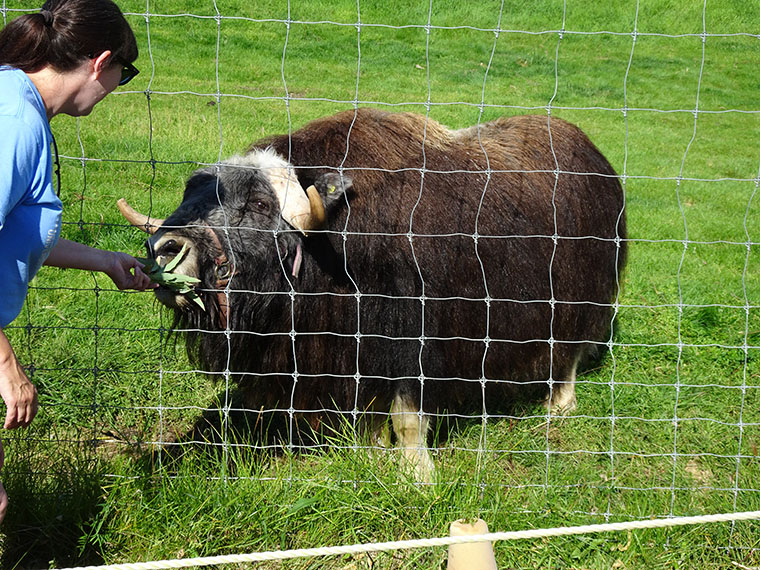
The reindeer were a little more comfortable in the sun (eventually seven of them dropped by).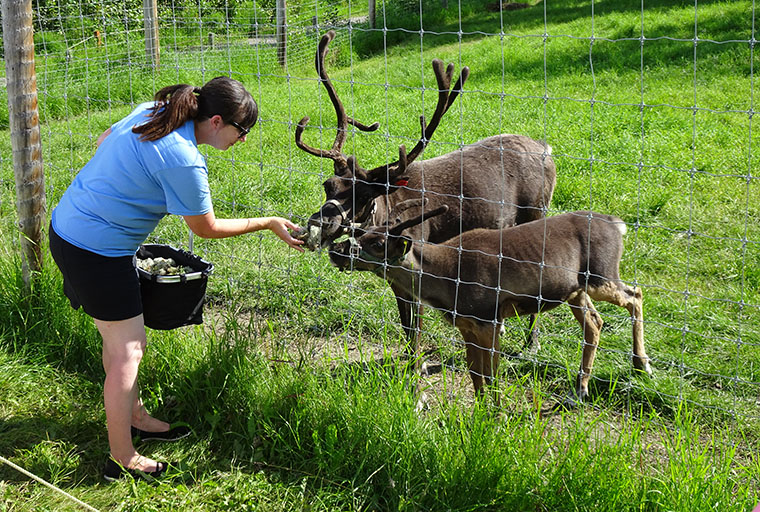

It looks pretty amazing all that you have traveled through. Be careful about the bears. I hear that there are lots of them in that neck of the woods…
xx
Thanks, the next couple of weeks should be good if the weather is not awful. We shall see.
I’ve not seen a bear yet on this trip but I did see one from about 30 feet away in Shenandoah NP in June so I know what they look like 🙂
What a lot of effort to keep the pipeline up and running. Why are the rivers close to dry?
Love reading/hearing about your journey and seeing the pictures and video. Nice to ‘get away’ from the Potomac for a while!
I’m not sure if the rivers are actually low or not. There is plenty of rain and many rivers so it may just be the open nature of the land. Most rivers here are braided so they have a much wider channel than they need for normal flow rates.
Glad you are enjoying the blog, see you in the fall. Steve.
Love all the pics and blogs, all looks lovely stay safe x
Glad you are enjoying it. Plenty to come.